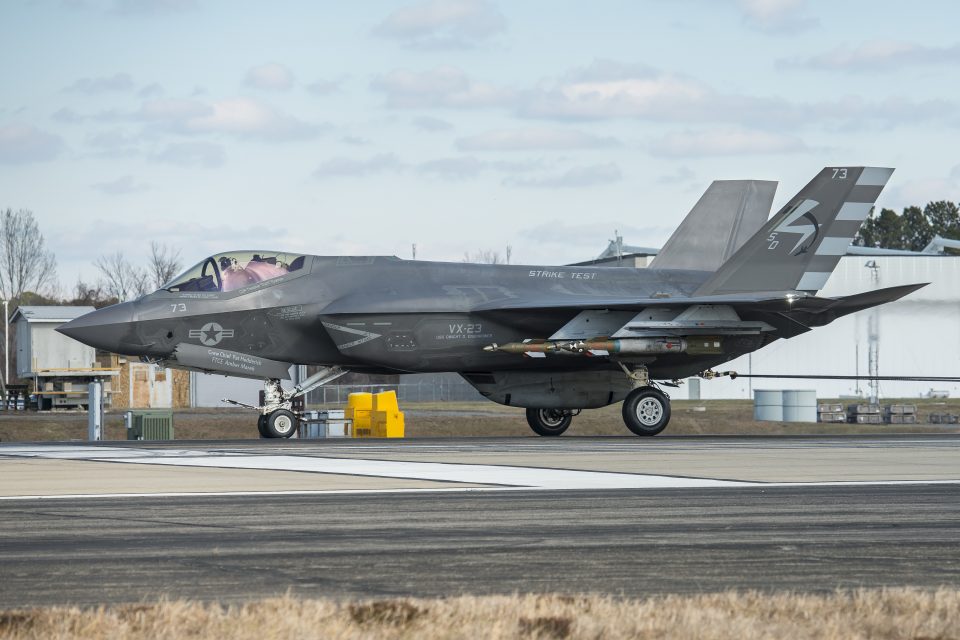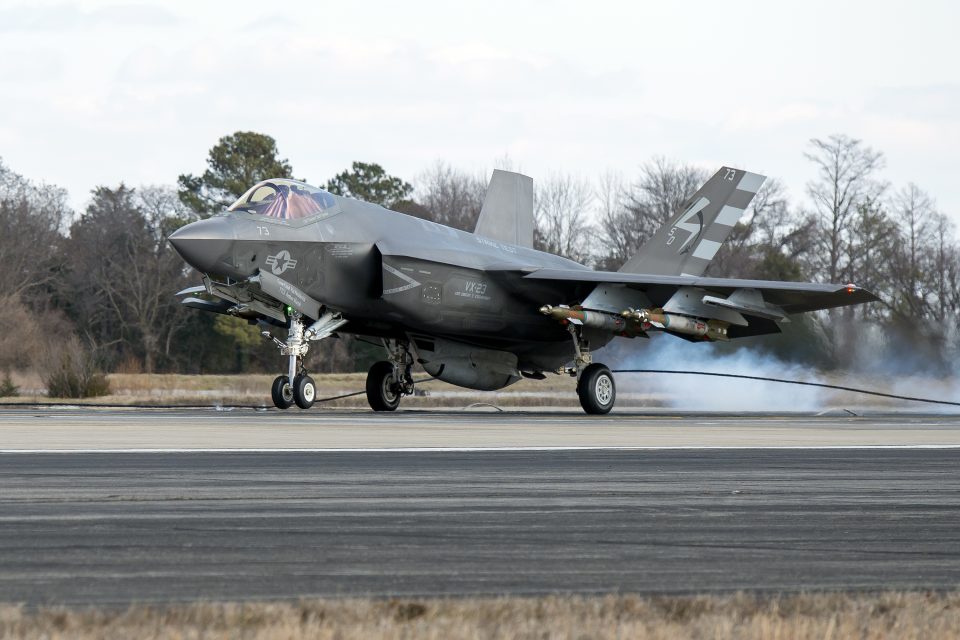2016-03-05 Lt. Cmdr. Daniel “Tonto” Kitts, an F-35 Lightning II test pilot assigned to the Salty Dogs of Air Test and Evaluation Squadron (VX) 23, landed in the history books Feb. 10, 2016, when he performed the first arrestment of an F-35C with external weapons.
Flight 282 of aircraft CF-03 from the F-35 Lightning II Pax River Integrated Test Force (ITF) was based at Naval Air Station Patuxent River, Md. (U.S. Navy photo courtesy of Dane Wiedmann).
In our interviews earlier this year at Pax, Ed Timperlake highlighted a key comment from “Tonto.”
The cross learning from the USMC F-35B, the service’s first T/M/S to achieve IOC, to the USAF F-35A to the USN F-35C model — with the preparation of the first RAF F-35B squadron — has meant that the USN can operate its Cs more rapidly and with more confidence and capability than in a traditional single-model aircraft test program.
This fact was brought out five years later in early 2016, at Pax when “Dutch” a very accomplished Navy fighter pilot with over 600 cats and traps in the F/A-18 stressed how stable the F-35 will fly around the boat.
During the Vietnam War, there were tests done of carrier pilots’ heart rates which we actually higher when landing on a carrier than when being shot at over Hanoi:
“The flying qualities are excellent and the machine systems built into the plane significantly enhance the ease of landing and taking off from the carrier.
Basically with the F-35 you get your mission cross-check time back.
Normally once you start the approach your scan is solely meatball, line up, and angle of attack. Your mission cross-check time behind the ship is zero because you’re just doing that scan.
With the F-35 and its enhanced flight controls and superb handling, the aircraft doesn’t deviate much from the desired flight path, which greatly eases the workload on the ball and frees up your scan. —It almost makes flying the ball a relaxing task!”
The fact that the Navy Test Pilots will rotate back into combat was not lost when Tonto made a seminal combat point about the generational shift from F/A-18 Hornets to the USN F-35C:
“How do you see the F-35 affecting tactical training?
Answer: With the current air wing (i.e, with the Super Hornet and Hornet as the tip of the spear), we are wringing out our tactics for a tactical advantage, which is also, at the same time, at the edge of the envelope for survival.
We are spending a lot of time making sure that we have the right tactics and the mastery of those tactics by pilots to survive and succeed.—It is about keeping a level of competence and capability where you’re not going to die.
There are points where you have a twenty second window.—You miss that window and you might be blown up!
When you’re traveling at those speeds, we are talking really only a couple of seconds that you have. And, if you’re not performing tactics exactly as they’re prescribed, you put yourself in a kill zone.
With the F-35, we are jumping a generation in tactics and now looking at the expanded battlespace where we can expand our impact and effect. You need to take a generational leap so we are the ones not playing catch up with our adversaries.”
While test pilots are wringing out the F-35 and ignoring critics, senior officers are constantly challenged to fly top cover against know-nothing second and third order derivative critics whose only contributions are creating crossed referenced ignorant public articles written by cubical commandoes whose only real skill is creating google search interlocking fields of fire.



